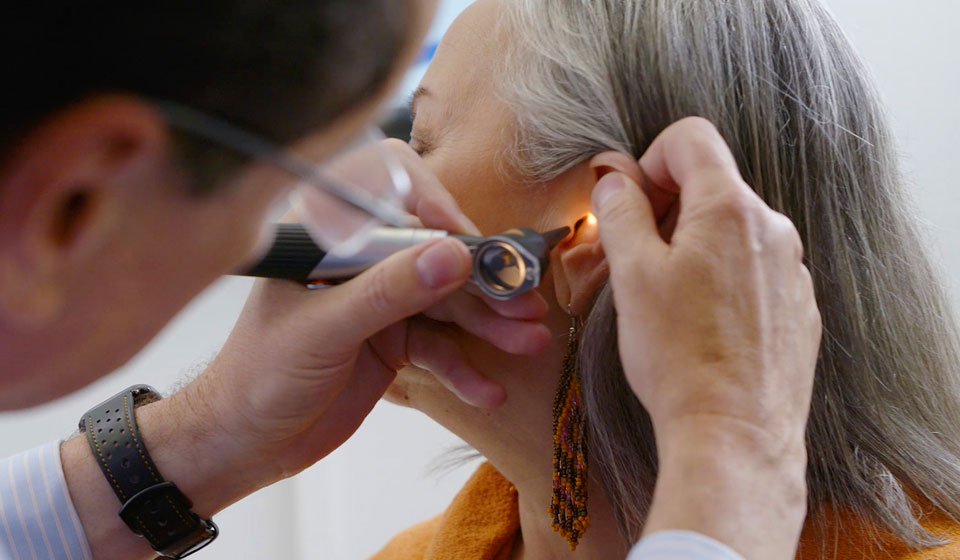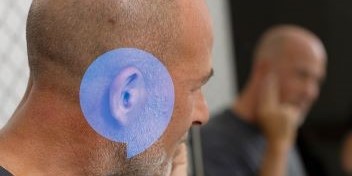What is ear wax?
Ear wax. Many people don’t give it much thought. If it’s not causing you any problems, there isn’t much reason to.
But when it starts to build up, it can cause discomfort. It is estimated that 2.3 million people in the UK1 suffer from ear wax problems. It affects people of all ages, but older people and children are more likely to suffer from it2.
It’s slightly strange stuff, a combination of cerumen (a substance secreted from glands in the outer ear canal), dead skin cells and hair.
The waxy texture prevents the skin in your ear from excessive drying and cracking, and then falling into your ear canal. Some studies show that it can even fight infection by displaying antibacterial properties3. Other studies have been known to show the opposite4, adding to the mysterious nature of the substance.
Wax essentially acts a self-cleaner for our ears. It also protects the sensitive ear canal from things that can cause infections, like bacteria and debris.
Signs of ear wax build up
Ear wax usually works its way out on its own. But excessive amounts can cause your ear canal to become blocked. This can lead to hearing loss, a feeling of fullness, and tinnitus. See your GP or a hearing specialist if you experience any of these.
Can my GP remove my ear wax?
In September 2020, a government minister confirmed that the NHS would no longer be offering ear wax removal as a core service. This means that you might not be able to get your ear wax removed at your local GP surgery, even if you used to in the past.
Your GP may refer you to a hospital audiology department if your ear wax build-up is linked to hearing loss, but this could take time.
If ear wax build-up is causing you discomfort, and the wait to get it removed on the NHS is too long for you, it might be worth considering having it removed privately.
How we remove your excess wax
Micro-suction is the quickest method of ear wax removal. It’s also the safest. It’s what Hidden Hearing use to remove ear wax.
A small, low-pressure probe is put in your ear which gently sucks the wax out. This is much safer than traditional methods such as ear syringing, an outdated procedure which uses high pressure and can lead to complications.
Can I remove ear wax myself?
Visible ear wax can be wiped away using a damp cloth. But you should avoid putting anything into your ears yourself. We do not recommend that you use cotton buds as they can cause more problems than they solve, including pushing wax even further into your ear.
If you’d like to learn more about Hidden Hearing’s ear wax removal service, visit our ear wax removal page where you can book an appointment.
Ear wax at a glance
- Medical name is cerumen (from ‘cera’, the Latin for ‘wax’)
- Was used in the pigment of illuminated manuscripts5
- The first lip balms were made from ear wax6
- Roman scholar Pliny the Elder (23–79 CE) recommended ear wax as a remedy for scorpion stings, and snake and human bites7
- Your genes will determine whether your wax is wet or dry
Sources:
- Cerumen Impaction - StatPearls - NCBI Bookshelf (nih.gov)
- Earwax impaction: why it needs to be treated in primary care | Nursing Times
- Bactericidal activity of cerumen. | Antimicrobial Agents and Chemotherapy (asm.org)
- Influence of human wet cerumen on the growth of common and pathogenic bacteria of the ear | The Journal of Laryngology & Otology | Cambridge Core
- P - Glossary for the British Library Catalogue of Illuminated Manuscripts (bl.uk)
- Human antimicrobial proteins in ear wax - Archive ouverte HAL (archives-ouvertes.fr)
- Pliny the Elder, The Natural History, BOOK XXVIII. REMEDIES DERIVED FROM LIVING CREATURES., CHAP. 8.—REMEDIES DERIVED FROM THE WAX OF THE HUMAN EAR. (tufts.edu)





